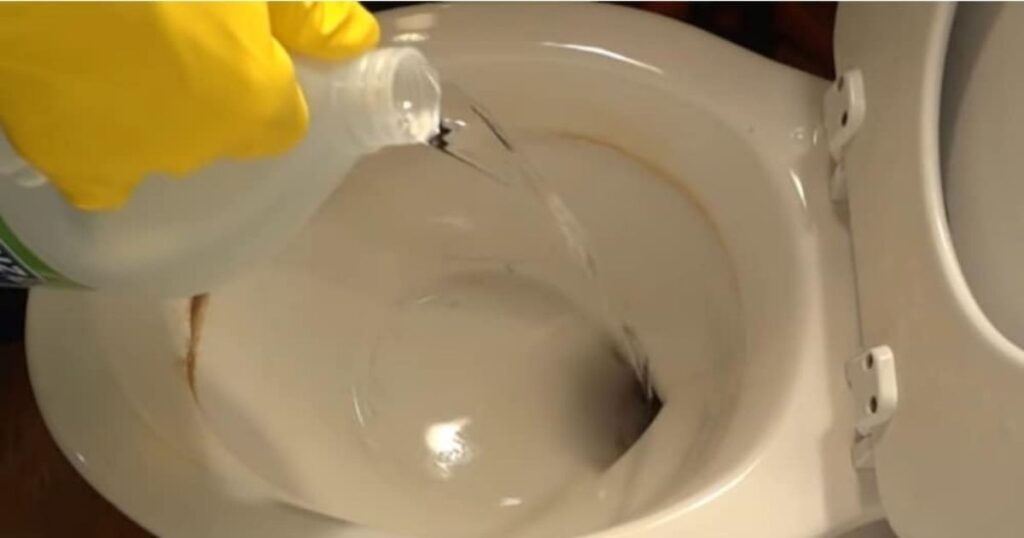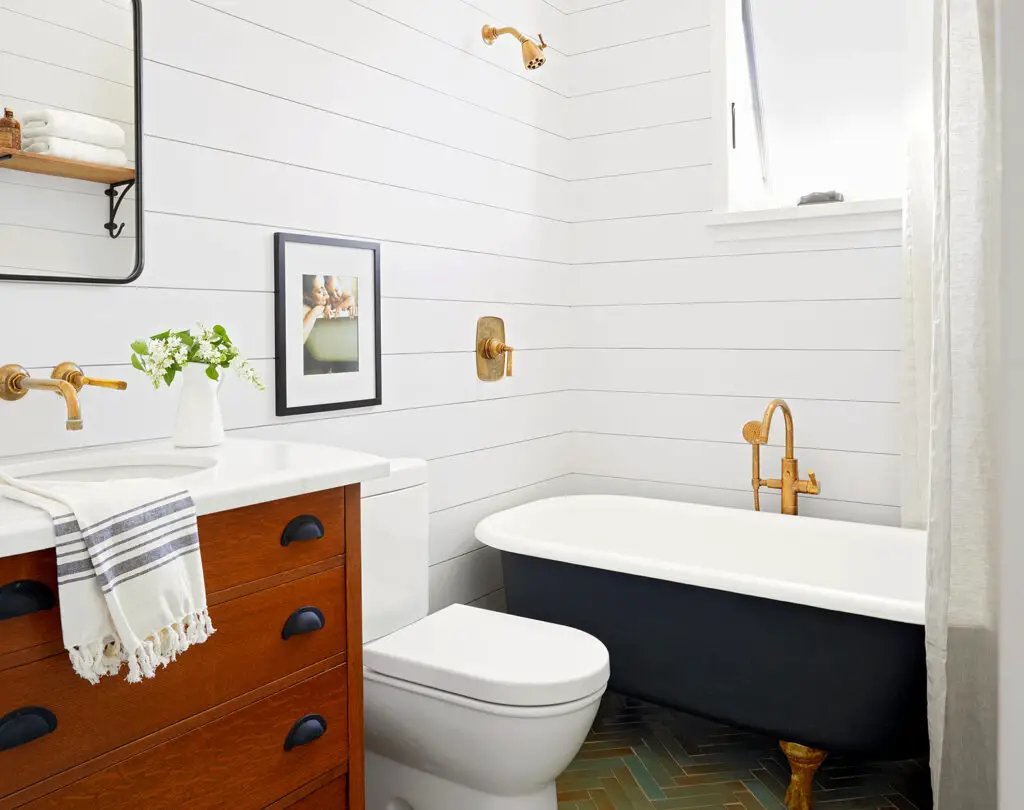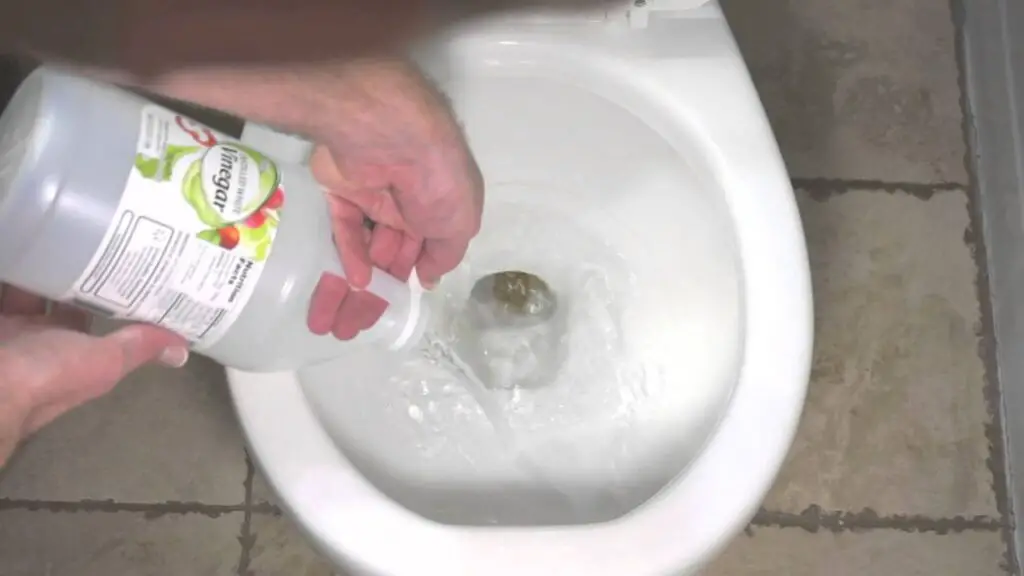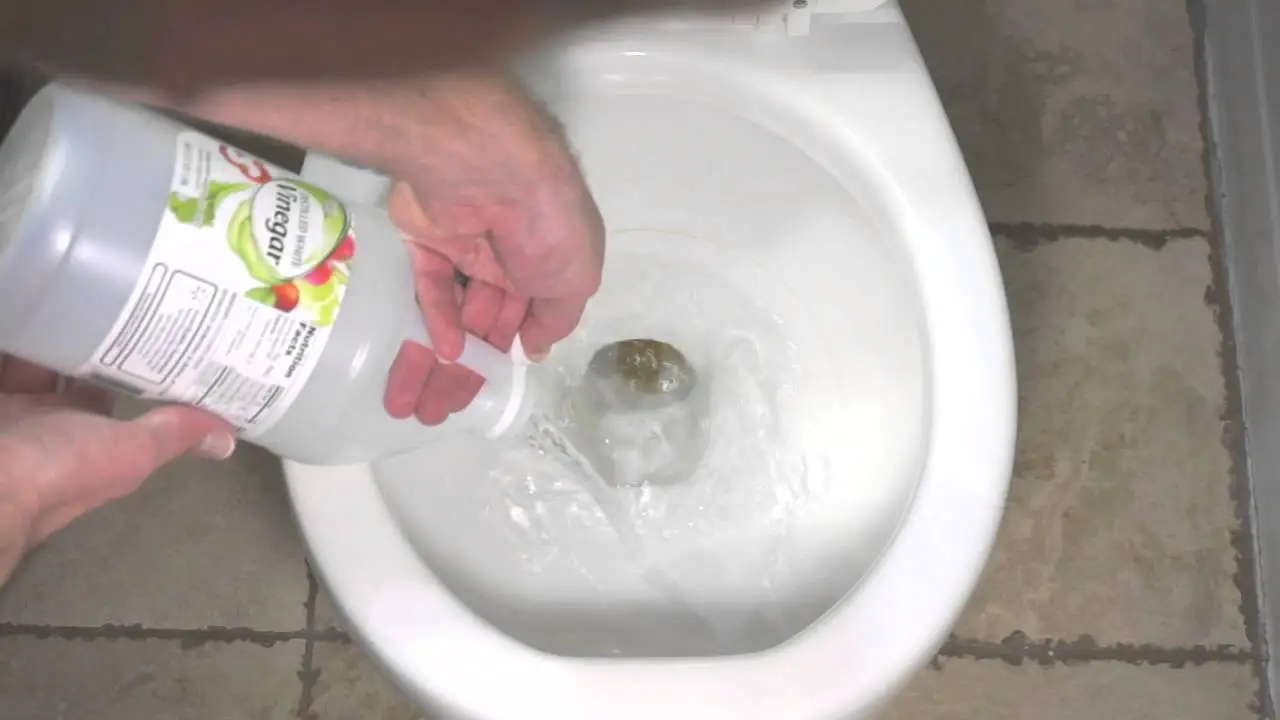How to Remove Hard Water Stains from a Toilet Bowl with Just One Product
Keeping a clean home isn’t just about tidy living rooms and spotless countertops. While the kitchen might sparkle and the cushions are fluffed in the living room, it’s the little, often-overlooked areas—like the bathroom—that truly reflect how much care goes into maintaining a home. One of the most common but frustrating issues many homeowners face is hard water stains, especially in the toilet bowl. They’re unsightly, stubborn, and often leave you wondering if you need a cabinet full of chemicals just to tackle the job.
Good news: you don’t.
Whether you’re prepping for houseguests or simply doing your weekly deep-clean, dealing with those orange-tinged rings in your toilet bowl doesn’t have to be complicated. In fact, you can banish hard water stains using just one product that most people already have in their homes: distilled white vinegar.

Why Hard Water Stains Happen
First, a quick science lesson. Hard water contains high levels of minerals—mostly calcium and magnesium—that can cling to surfaces over time. As water sits in your toilet bowl, those minerals settle and build up, leaving behind a chalky white residue or, more commonly, an orange or brown ring. This is especially common in homes that use well water or are located in areas with high mineral content in the municipal supply.
Even if you have a water softening system installed, some buildup can still occur over time. Ceramic and porcelain surfaces like toilet bowls are particularly susceptible to these stains. And once those stains appear, they can be tricky to remove—unless you know the right method.
The One Product Solution: Distilled White Vinegar
You don’t need harsh chemicals, bleach, or scrubbing for hours. Distilled white vinegar is a natural, inexpensive, and effective way to break down mineral deposits and remove hard water stains with minimal effort.
Here’s exactly how to do it:

Step-by-Step Guide to Removing Hard Water Stains with Vinegar
What You’ll Need:
- Distilled white vinegar
- A cup or small container (for removing water)
- Toilet brush or wand
Step 1: Remove Water from the Bowl
Start by removing as much water as you can from the toilet bowl. You can do this by turning off the water supply and flushing, or by using a small container or cup to scoop the water out manually. This step ensures that the vinegar can fully coat the stained area, especially if the stain is above the water line.
Step 2: Pour in the Vinegar
Once the bowl is mostly empty, pour distilled white vinegar directly into the bowl. Be generous—you want to use enough to completely submerge the stained area. Let the vinegar sit for two to three hours. This gives it time to break down the mineral buildup without any need for scrubbing.
Step 3: Scrub Gently
After the vinegar has soaked, take your toilet brush and scrub gently around the stained area. You’ll likely notice the stain loosening with little effort. The acidity in the vinegar dissolves the mineral deposits, making them easy to wipe away.
Step 4: Flush and Admire
Once you’ve scrubbed away the stains, flush the toilet. You should be left with a clean, sparkling bowl—no chemical smell, no leftover grime, and no hard water ring in sight.

Why Vinegar Works So Well
Distilled white vinegar is acetic acid, a mild acid that’s safe for use around the home but tough on mineral deposits. It dissolves calcium and lime, making it especially effective on stubborn hard water stains. It’s also safe for septic systems, inexpensive, and non-toxic, which makes it a go-to solution for eco-conscious homeowners.
Unlike bleach or abrasive cleaners, vinegar won’t damage the porcelain surface of your toilet bowl, and it doesn’t pose any health risks when used properly.
Preventing Hard Water Stains in the Future
Once your toilet bowl is clean, you may want to take steps to prevent future stains:
- Clean regularly: A weekly vinegar soak can help stop stains before they start.
- Use a toilet cleaning puck or cartridge: Some products are designed to reduce buildup between cleanings (just check that they’re safe for your plumbing).
- Keep vinegar on hand: Pouring a cup of vinegar into the bowl and letting it sit overnight once a week is a great preventative habit.
- Monitor water quality: If hard water is a recurring issue in your area, consider getting your water tested or upgrading your water softening system.

A Cleaner Home, One Easy Fix at a Time
There’s something incredibly satisfying about solving a household problem with a simple, budget-friendly solution. Vinegar may already be sitting in your pantry, but with just a little time and a few easy steps, it can completely transform your toilet bowl from stained to sparkling.
You don’t have to dread cleaning your toilet or hide it behind a closed bathroom door when guests come over. With this one-product trick, your bathroom will be just as ready for visitors as the rest of your home—whether you’re expecting them or not.
So next time you notice a ring forming in the bowl, skip the trip to the store. Reach for your vinegar, and give your toilet the deep clean it deserves—no fuss, no chemicals, and no stains left behind.

